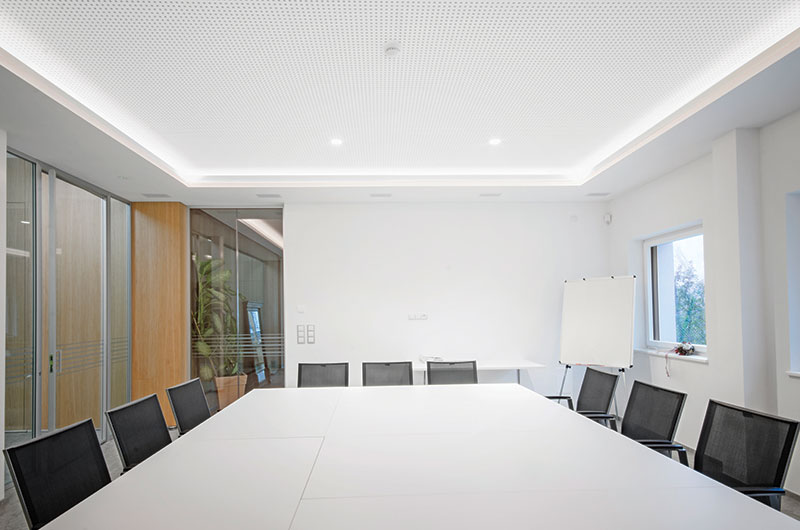LIGHTING IN PROFESSIONAL AND RESIDENTIAL ENVIRONMENTS
Interior Lighting: More Safety, Better Efficiency, Greater Atmosphere
Good lighting significantly affects the level of well-being and has different objectives based on the intended use of the environments.
For the lighting of domestic environments, it is necessary to take into account the characteristics of the rooms, which can be dedicated to night rest or daily activities, it is also necessary to consider the integration between external daylight and artificial light.
A fundamental aspect is then the aesthetic performance of the system, which must reconcile functionality and design. These aspects also apply to the design within hotels. Here the lighting of the bedrooms is generally very different from that of the common areas such as the reception area and the halls.
In the case of lighting work environments, the aspect to pay the most attention to is visual comfort. A light inadequate for the tasks to be performed could cause a drop in concentration, damage the health of workers, compromise the level of safety. And it is for this reason that the technical regulations provide values that must be respected for the average maintained illuminance in the work area (parameter Ēm), for uniformity within the premises (parameter U0), for color rendering (parameter Ra) and for glare (parameter UGR).


ITALIAN AND EUROPEAN REGULATIONS
UNI EN 15193:2017
This standard specifies the methodology for calculating the energy performance of systems for interior lighting and for calculating or measuring the amount of energy required or used for lighting new or renovated buildings; moreover, the standard introduces the LENI parameter which represents an index of energy performance of lighting systems in home and work environments.
UNI EN 12464-1:2013
Reference standard for lighting workplaces in indoor environments. It contains tables that specify the lighting requirements to be respected based on the type of work performed and the tasks that this involves at a visual level. The parameters are:
- minimum maintained illuminance Ēm
- maximum glare value UGRL
- minimum uniformity U0
- minimum color rendering value Ra
UNI EN 12464-2:2014
This standard specifies the methodology for calculating the energy performance of building lighting systems and for calculating or measuring the amount of energy required or used for lighting in new or renovated buildings. In addition, it introduces the LENI parameter which is an energy performance index for lighting systems in buildings.
UNI EN 12193:2008
This standard deals with the lighting of sports facilities. In particular, the minimum requirements for the design and control of lighting in sports installations in terms of: illuminance, uniformity, glare limitation and colour properties of light sources.
UNI EN 15251:2008
The European reference standard for the design of the indoor environment and the assessment of the energy performance of buildings also deals with lighting, expressly referring to EN 12464-1 for requirements in non-residential buildings and to EN 12194 for sports facilities. In addition, reference is made to EN 15193 for energy calculations. In Appendix D one can find the required values for mean illuminance, glare, Ra rendering and reference height for different uses. Note how for stairs and corridors adequate lighting is required at foot level to avoid tripping, while if sedentary activity is required the most important area is at table height (0.8 m).
UNI/TS 11300-2:2014
The evaluation of electrical energy needs for lighting services is only carried out for non-residential buildings, as listed in Appendix D. In the case of an energy diagnosis, the calculation must also be made for the building's outdoor areas. The calculation of the energy demand for the lighting service is basically carried out on the basis of UNI EN 15193:2008.

